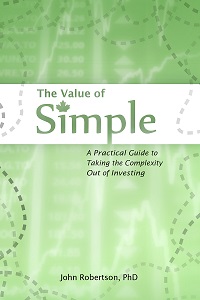The Deceptive Importance of Changes in the Homeownership Rate
March 2nd, 2012 by PotatoOne meme out there regarding the housing bubble is that today’s price doesn’t matter because immigrants are going to create so much demand that they’ll support the market. “Toronto has X thousand immigrants. Every year.†To paraphrase & combine a few examples. Thing is, you can’t look at immigration in a vacuum. Ben Rabidoux must be seeing the same chatter, since he also just had a post on population growth.
Consider my shower. Let’s say I just bought the AwesomeSauceâ„¢ 8-head shower system, capable of spraying out an amazing 23 litres of skin-scorching hot water a minute. I clamber on in there, intent on scrubbing away the shame of being a renter.
How long before I flood my house?
You can’t answer because that’s just one part of the problem, on the other side is my drain, taking away the influx.
So for immigration, part of that is just offsetting the natural population decline in the country. The net national growth rate is just a touch over 1%. It’s higher in Toronto and Vancouver, but still just about 2%. For comparison, the US growth rate is about 0.8%, and was running neck-and-neck with Canada over the last decade. Ben has some charts showing how much higher it was in some states that boomed and busted.
Ok, 2% growth per year every year is a fair bit of growth: enough to over-power infrastructure and public transit and the like over time. Toronto is full and getting even more crowded. But is that demand driving housing prices, and will it continue to drive housing prices? How can we consider other metrics in the face of the unstoppable immigration tidal wave?
Another important factor to consider is the ownership rate: in 10 years we went from something like a 65% ownership rate to 70% nationally. That seems like a trivial change: half a percent a year. Let’s try to put that ownership rate change in perspective with population growth to get an idea of some of the trends driving housing:
In the GTA, with all that immigration, we went from 5 million people to 6 million in 10 years. That’s something like 650k-700k new owners created by immigration/population growth (households would be lower by some factor like 2.4X, and about 300k of the newcomers would be renters). We also created 250-300k new owners by increasing the ownership rate. And that’s if you are conservative and assume that the increase in the ownership rate in a boom town is the same as it is nationally.
To get to my point: there’s a limit to how much that ownership rate can be increased. There’s a hard limit of 100%, but even below that, there will be some portion of the population that just isn’t going to buy. Even if we don’t reverse course and bring it back down to 65% — just stay here at 70% — that has consequences. Over the last 10 years, demand has been 40% higher than it “should” have been because of the expanding ownership proportion. We had ~1M (or likely more) new owners in the GTA rather than ~700k expected from population growth alone. If the next 10 years features a reversal of that trend — owners becoming renters again, or the average age of owning pushing back a few years — then demand could swing from 1M/decade to 400k/decade, or a 60% drop. Even just stopping the process of borrowing future demand and hitting a plateau represents a 30% decline in demand from the current run rate.
What will that do to prices? To be fair to my point above about looking at both sides, you have to know what the supply situation will be like. But everything suggests supply will stay robust.
Unfortunately like many other pieces of the puzzle, there’s no timing information with this one: though the US topped out at 70% homeownership, that’s not to say that Canada can’t keep going for 75% in the next decade, or 80% in the one after that. But the seemingly small change in this number represents a very meaningful slice of demand, so it’s important to understand — doubly so because it’s a factor that has changed over time, whereas population growth and immigration have been steady for much more than just the last 10 years.


 Questrade: use QPass 356624159378948
Questrade: use QPass 356624159378948 Passiv is a tool that can connect to your Questrade account and make it easier to track and rebalance your portfolio, including the ability to make one-click trades.
Passiv is a tool that can connect to your Questrade account and make it easier to track and rebalance your portfolio, including the ability to make one-click trades.
March 3rd, 2012 at 12:56 pm
It seems like the prices are a clear economic signal: “stop immigrating to Toronto, we’re full”.
March 4th, 2012 at 1:14 pm
I get that feeling sometimes :)